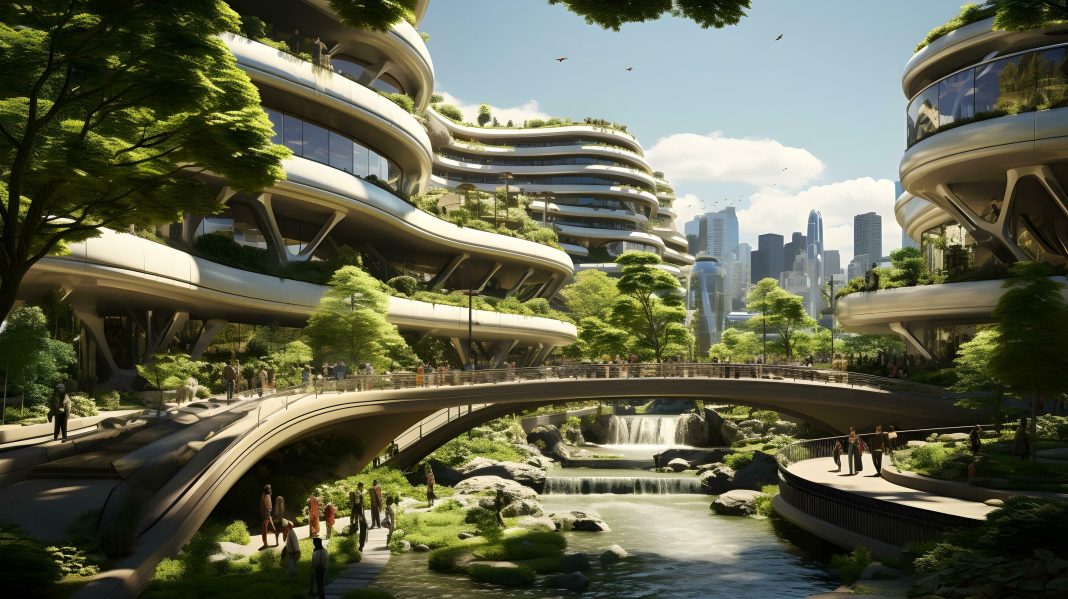Amidst the sprawling concrete and steel structures that dominate urban skylines, a quiet revolution is taking root. Urban gardening, a movement to cultivate greenery within city spaces, is sprouting up across the globe. It’s a trend that’s transforming rooftops into vegetable patches, balconies into bee havens, and abandoned lots into community gardens. This green uprising is reshaping not just our urban landscapes but our relationship with food, community, and nature itself.
Sowing Seeds of Sustainability
The concept of urban gardening is far from novel, with historical roots that trace back to the victory gardens of World War II. Today, it’s evolved into a robust initiative aimed at fostering sustainability within city confines. With urban populations surging, the importance of sustainable practices becomes paramount. Urban gardens are not only reducing the carbon footprint by localizing food production but also addressing the ‘food desert’ phenomenon plaguing many city dwellers.
By converting underutilized spaces into productive green areas, urban gardening is combating the food desert issue head-on. It provides fresh, locally-sourced produce to communities that otherwise lack access to healthy food options. Moreover, the proximity of these gardens reduces the need for transportation, minimizing the carbon emissions associated with traditional farming supply chains.
A Blooming Community Impact
Urban gardening is not just about producing food; it’s also about cultivating community. These green spaces become focal points for social interaction, education, and collaboration. Through shared gardening projects, individuals from diverse backgrounds come together, fostering a sense of community and belonging. In an era where urban isolation is prevalent, these communal spaces offer a sanctuary for connection and collective empowerment.
Educationally, urban gardens serve as living classrooms for all ages. They teach valuable skills like composting, planting, and harvesting, and highlight the importance of environmental stewardship. For children, these gardens are gateways to understanding where food comes from, an important lesson in a world increasingly detached from natural food sources.
The Therapeutic Nature of Greenery
The psychological benefits of being around greenery are well documented. Urban gardening serves as a natural antidote to the stresses of city life. Horticultural therapy, the use of plant cultivation to improve mental health, has gained recognition for its effectiveness. Tending to a garden offers a respite from the fast-paced urban environment, reducing anxiety and improving overall well-being.
These gardens also enhance biodiversity by providing habitats for a variety of species. In cities, where natural habitats are scarce, gardens can support pollinators like bees and butterflies, birds, and beneficial insects, contributing to ecological health.
Challenges and Innovations
While the benefits are numerous, urban gardening faces its share of challenges. Space constraints, soil contamination, and lack of natural light in dense urban areas can stifle growth. However, innovative solutions such as hydroponics, vertical gardening, and community composting programs are addressing these hurdles.
Hydroponic systems, which grow plants in a water-based, nutrient-rich solution, sidestep the need for expansive soil areas. Vertical gardens use walls and facades, maximizing limited spaces and beautifying the urban scenery. Moreover, city-wide composting programs are turning organic waste into valuable fertilizer, closing the loop on the food cycle within the city.
Cultivating the Future
As we look ahead, urban gardening stands as a beacon of hope and a model for sustainable urban development. By integrating nature into the urban design, we can create self-sufficient ecosystems that support both human and environmental health. The potential for expansion is immense—from rooftop gardens in high-rises to edible landscapes in public parks.
Urban gardening is more than a trend; it is a vital component of the urban future. It represents a shift towards resilience, well-being, and a more harmonious coexistence with our environment. Cities that embrace this green movement are setting a precedent for what it means to live sustainably in the 21st century.
As we continue to nurture these urban oases, we not only grow plants, but we also grow healthier, more connected, and more sustainable communities. The concrete jungle may be here to stay, but within it, we have the power to cultivate life, beauty, and a greener tomorrow.

